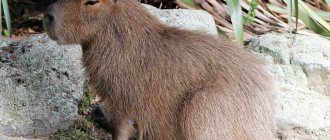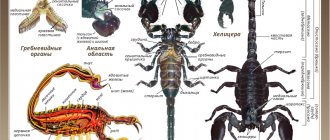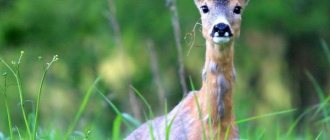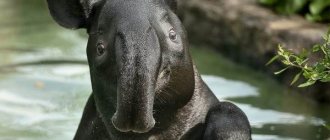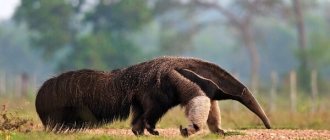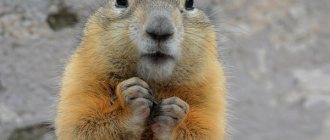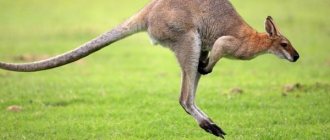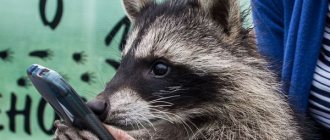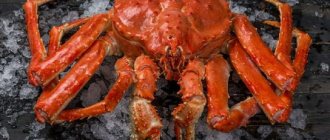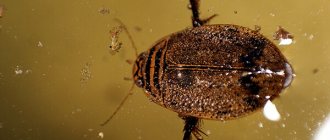- Wild animals
- >>
- Mammals
These small rodents, which in appearance resemble a cross between a hamster and a mouse, live in the tundra and forest-tundra of Eurasia and North America. Because of their appearance, they are also called polar pieds. They have motley fur with small gray-brown streaks. Lemmings serve as the main food for many polar animals, but due to intensive reproduction they quickly replenish their populations.
Varieties
There are about 20 species of lemmings. The exact number is difficult to determine because zoologists still disagree on whether the animal is a separate species or simply a subspecies.
Photo: Oceanwide Expeditions
The following is a list of species and genera of lemmings with their scientific names:
True lemmings (genus: Lemmus)
- Yellow-bellied Lemming (Lemmus trimucronatus)
- Siberian brown lemming (Lemmus sibiricus)
- Wrangel Island Lemming (Lemmus portenkoi)
- Norwegian Lemming (Lemmus lemmus)
- Amur lemming (Lemmus amurensis)
Hoofed lemmings (genus: Dicrostonyx)
- Nelson's Lemming (Dicrostonyx nelsoni)
- Oldgilvy lemming (Dicrostonyx nunatakensis)
- Hudson Lemming (Dicrostonyx hudsonius)
- Greenland lemming (Dicrostonyx groenlandicus)
- Arctic Lemming (Dicrostonyx torquatus)
- Analascan lemming (Dicrostonyx unalascensis)
- Vinogradov's Lemming (Dicrostonyx vinogradovi)
- Richardson's hoofed lemming (Dicrostonyx richardsoni)
Forest lemmings (genus: Myopus)
- Forest Lemming (Myopus schisticolor)
Swamp lemmings (genus: Synaptomys)
- Southern marsh lemming (Synaptomys cooperi)
- Northern marsh lemming (Synaptomys borealis)
Yellow steppe lemmings (genus: Eolagurus)
- Przewalski's steppe lemming (Eolagurus przewalskii)
- Yellow steppe lemming (Eolagurus luteus)
Steppe lemmings (Genus: Lagurus)
- Steppe Lemming (Lagurus lagurus)
Only 7 species of lemmings live in the Russian Federation: forest, Norwegian, Siberian, Amur, Arctic and Vinogradov's lemmings.
Origin of the species and description
Photo: Lemming
Lemmings belong to the order of rodents, the hamster family. The pied mice are very close to these small animals, so because of their external similarity to lemmings, they are sometimes even called polar pieds. In the current scientific classification, all lemmings are divided into four genera, each of which contains several species. There are five species of lemmings in Russia, and according to some sources, seven species.
The main ones are:
- Siberian (aka Ob) lemming;
- Forest Lemming;
- Ungulate;
- Amursky;
- Lemming Vinogradova.
Their classification is strictly scientific, and external species differences between animals are almost completely insignificant. Animals inhabiting islands are, on average, slightly larger than mainland individuals. There is also a gradual decrease in the size of lemmings living in Russia, in the direction from west to east.
Video: Lemming
Fossil remains of the ancestors of modern lemmings have been known since the late Pliocene. That is, they are approximately 3-4 million years old. Much younger fossils are often found in Russia, as well as in Western Europe outside the current range of lemmings, which is likely due to significant climate change.
It is also known that approximately 15 thousand years ago there was a change in the structure of the molars of these animals. This correlates with data that at the same time there was a sharp change in vegetation in the zones of modern tundra and forest-tundra.
Geographical distribution
Photo: lekkiM
These mammals live in the Northern Hemisphere , throughout the arctic and subarctic regions of North America, Greenland, Russia, Norway, Sweden, China, Mongolia and many other countries. There is a wide variety of species, and each has its own unique geographic distribution. Some species are much more widespread, while others live in small, restricted populations.
- Biogeographic regions: Palaearctic (native)
The main link
In conditions of permafrost and scarce food, it is the lemming that becomes the main link in the trophic chain of predators in the North. The animal serves as the main prey for such predators as northern weasel, ermine, arctic fox, fox, wolf and snowy owl. The hoofed lemming ensures their existence and successful survival. For the endangered polar white owl, these rodents make up about 95% of the diet.
Habitat
Lemmings are the smallest representatives of Arctic mammals . However, the well-being of most predators in Arctic ecosystems depends on them. Most of the rodents' habitat is covered by permafrost. In their native region, the soil often freezes within a few centimeters. So it’s not easy for lemmings even in the summer, because digging deep tunnels for shelter in such conditions is extremely difficult. The only solution is to wait for the seasonal freezing and thawing of moist soils, which creates ridges and depressions suitable for use as shelters and travel routes.
Photo: Andrey Zvoznikov
With the onset of spring and the melting of snow covers, lemmings migrate to areas of forests and mountains. Moreover, different species in the same habitat area usually prefer different places of residence in the summer. For example, hoofed lemmings choose dry areas at higher elevations, while yellow-bellied lemmings choose lowlands with moist soil. This segregation is determined by the location of the preferred food supply; for example, hoofed lemmings will seek out cranberries and willow branches, while their yellow-bellied cousins will prefer sedges and arctic moss. During the winter, habitat segregation tends to change as ungulate species migrate to lowlands where there is deep snow that provides more cover.
- Habitat: temperate, polar
- Terrestrial biomes: tundra, taiga and cold steppe grasslands
Natural enemies of lemmings
Photo: Lemming in Russia
Lemmings have a lot of enemies - predatory animals. For most predatory polar inhabitants they serve as the main source of food: for arctic foxes, foxes, peregrine falcons, stoats, as well as for birds:
- Polar owls;
- Skuas;
- Krechetov.
These predators directly link their existence and food supply to the state of the lemming population. Moreover, if the rodent population falls, then predators can even deliberately reduce their birth rate if they discover a shortage of lemmings in a certain period. In this way, the entire ecosystem ends up being well balanced.
In addition to dying in the mouth of a predator, a rodent can die in another way. When lemmings migrate, their actions become self-destructive: they jump into the water and drown, putting themselves in danger. They also run continuously on open surfaces without shelter. After such migrations, the bodies of drowned lemmings often serve as food for fish, marine animals, seagulls, and various scavengers. They all rush to replenish energy reserves in such large-scale death zones.
In addition to ordinary predators, for which lemmings form the basis of their diet, at certain moments completely peaceful herbivores may show a food interest in them. Thus, it was noted that, for example, deer may well eat lemmings to increase protein in the body. Of course, these are rare cases, but nevertheless they happen. Geese have also been observed eating these rodents, and they eat them for exactly the same purpose - from a lack of protein.
Sled dogs also feast on lemmings. If in the process of their work they find a moment to catch an animal and have a snack, then they will certainly take advantage of this opportunity. This is very convenient for them, given the complexity and energy consumption of their work.
It is interesting that when meeting both a person and many other animals, many lemmings do not run away, but rather often jump in their direction, then rise on their hind legs and squeal shrilly, trying to scare the enemy.
Character traits
Appearance
Unlike their relative the vole, these small, furry rodents have a fairly round body shape. Their fur is long and thick, which provides reliable protection from the arctic cold.
Photo: Alexey Loginov
Lemmings have short ears, mostly hidden by fur, short legs, small tails, and long whiskers. They have small, beady eyes . Their front paws have special flat claws that help them quickly dig through snow.
Coloring
The color of lemmings' fur is monochromatic or variegated. Depending on the species, the fur can be gray-brown, brown, golden brown or black.
Photo: HowStuffWorks
The color of the coat does not change depending on the time of year. The only exceptions are ungulate lemmings. In winter, their fur becomes much lighter, and two greatly enlarged claws appear on their front paws. However, with the spring moult, the summer fur takes on a grayish tint with a more prominent dark stripe along the back, reddish spots appear on the ears, and the collar becomes chestnut.
Dimensions
Although lemmings come in a variety of shapes and sizes, most adults are 10–15 cm in body length, including about 20 mm of tail. These creatures rarely weigh more than 70 grams.
Smaller species, such as forest and steppe lemmings, grow to approximately 12 cm in length (excluding tail length) and weigh about 30 grams. Larger varieties, such as the Norwegian lemming, reach 17.5 cm in length and weigh about 130 grams.
- Body length: 10 to 17.5 cm
- Tail length: up to 2 cm
- Body weight: from 20 to 130 grams
- Birth weight: 3.3 grams
What does a lemming eat?
Photo: Polar Lemming
Lemmings are herbivores. They feed on all kinds of berries, roots, young shoots, and grains. These animals are very fond of moss. But most of the food of polar rodents is green moss and lichens, widespread throughout the tundra.
Depending on the specific subspecies, their diet may include:
- Sedge;
- Blueberries and lingonberries;
- Blueberries and cloudberries;
- Some mushrooms.
Rodents often eat the buds or leaves of dwarf trees and shrubs typical of the tundra, as well as their branches and bark. In the forest-tundra, animals feast on young shoots of birch and willow. Less commonly, lemmings may eat insects or shells that have fallen from a bird's nest. There are also cases where they try to gnaw on the antlers shed by a deer. In winter, the root parts of plants are eaten.
The lemming feeds around the clock with breaks for sleep. In fact, at a satisfying time in 24 hours, he is able to eat such a large amount of plant food that its mass begins to more than double the animal’s own weight. Because of this feature, rodents cannot live in one place all the time, and therefore they are forced to constantly move in search of new food.
On average, an adult lemming consumes about 50 kg of various vegetation per year. At the peak of their numbers, these animals have a fairly strong impact on the vegetation in their places of residence, destroying almost 70% of the phytomass.
Lifestyle and behavior
Most lemmings are solitary , coming together only to mate. True, a number of varieties prefer to organize small groups. Lemmings are active both day and night.
Photo: Ardea
A long and cold winter is the most dangerous time of year for them, because, unlike many rodents from temperate regions, lemmings do not go into suspended animation. It's amazing that these tiny warm-blooded mammals remain active throughout the Arctic winter without dying from extreme temperatures. Their small appendages (tails, paws and ears) reduce heat loss, and winter fur is thicker than summer fur.
With the approach of Arctic cold, lemmings build spherical nests on the surface of the ground, using finely ground plant material, which provides additional thermal insulation for resting rodents. Deep snow covers also help maintain relative warmth. During this period, lemmings feed in the sub-Nivian space , located between the snow layer and the soil, almost never climbing to the surface. In the Arctic region, temperatures in the sub-Nivian space are low (-25°C), but this is better than freezing on the surface blown by cold winds.
Photo: Daily Mail
Plus, these rodents are amazingly brave little creatures. They have colorful fur, and scientists believe this fur is a warning about their aggressive behavior. When faced with a choice between fight or flight, lemmings choose fight. But despite such an aggressive and bold character, lemmings are still the prey of the vast majority of Arctic predators. Predators are highly dependent on the lemming population, and predator populations decline as rodents decline in the area.
Key Features
Despite the fact that lemmings live alone, in river areas they have the habit of gathering in fairly large flocks.
They are excellent swimmers and can easily overcome very wide water obstacles.
However, during such crossings, a large number of individuals die from attacks by aquatic and land predators.
This small animal has a huge number of natural enemies. For many animals, such as ferrets , mongooses , raccoons , manulas , arctic foxes, and even giant centipedes , it is a source of food.
Interesting! Arctic foxes and polar owls are very dependent on the number of lemmings. In the case of active reproduction of these rodents, predators do not always leave their homes. And the intensity of reproduction of polar owls directly depends on the number of lemmings, and if there are few lemmings, then the predator simply will not lay eggs!
The more cubs a female lemming produces, the more damage will be done to the surrounding vegetation.
For this reason, nature has introduced restrictions on the process of their reproduction - an animal can bear offspring once every few years.
Lemmings are capable of eating away surrounding vegetation very heavily.
Representatives of some species crowd together in their burrows in winter, and if the cold season does not please with an abundance of snow, then the males begin to scurry about randomly in search of food.
Female individuals with a brood, in spite of everything, on the contrary, stick to their familiar territory.
Fluctuations in lemming numbers are often observed.
But contrary to popular belief about suicidal tendencies, this is due to their ability to reproduce intensively, which, in turn, will always be influenced by weather conditions and the presence of a constant source of food.
Interesting! In the 19th century, scientists noticed a sudden decrease in the number of these animals, and therefore the opinion spread that they were prone to mass self-destruction. This myth was even published by Arthur Mee in a children's encyclopedia. It was believed that animals, during a rapid increase in their numbers, flocked into huge flocks and followed the “leader” to a reservoir, where they died. However, this opinion is erroneous, since lemmings prefer a solitary lifestyle and herding is unusual for them, not to mention the fact that they will not follow one “guide”!
Where the lemming lives, food should always be in abundance, but in the absence of a sufficient amount, the animals begin to eat poisonous plants.
Sometimes there may even be attacks committed on animals that are larger than these rodents.
In search of suitable vegetation, the animal will move across fairly large areas.
Diet
Lemmings are herbivores that are not too picky about what they eat. Like voles and muskrats, lemmings feed primarily on leaves, shoots, roots, plant bulbs and moss. Their diet includes herbs, shrubs, berries and mushrooms. Sometimes they do not disdain insects. Like all rodents, lemmings' incisors grow continuously throughout their lives. This allows them to eat very tough plants.
Photo: weird square
Lemmings are thrifty animals. They bury mosses, grasses and sedges in underground storage facilities . Therefore, in winter, instead of collecting food in their tunnels like pikas, lemmings dig under the snow and look for previously buried food.
Characteristic
Lemming is a small rodent that is a member of the hamster family. There are about 20 species in total.
The animal moves on short legs, on which claws grow closer to winter. The animal uses them to dig through the snow, extracting food from under it.
The Lemming looks very cute, as he is dressed in a fluffy fur coat that completely hides his small ears.
Its variegated color allows it to camouflage perfectly in the grass in the warm season - this can be seen in the next photo.
Compact and fast, the lemming becomes inconspicuous on the forest floor
Representatives of some species molt and become lighter with the onset of cold weather.
Thanks to this, the animal, like the arctic fox , almost completely merges with the snow.
Breeding season
The exact reproductive strategy of this rodent varies by species. Most species breed almost all year round , even in winter. They can have several litters of young per year. A baby boom occurs approximately every 3-5 years.
Both sexes are incredibly reproductive, being able to reproduce 1-1.5 months after birth. The number of breeding pairs varies significantly from year to year. The trend is most likely related to population density. If lemming numbers are high, pairs mate less frequently and the breeding season ends as early as July. Conversely, when populations are low, females breed more frequently and the mating season extends into September.
Photo: Imgur
At one year of age, a female can give birth to three litters; a year later she will bring up to six litters, even during such a short arctic summer. But even in the frosty winter, lemmings sometimes reproduce, but in the spring and autumn there is always a pause separating the summer and winter mating seasons.
- Mating system: polygynous
- Breeding interval: every 3-4 weeks
- Breeding season: year-round
- Average number of offspring: 7 cubs
- Average gestation period: 19 days
- Weaning time: 14 to 16 days
- Age of sexual or reproductive maturity: 4-6 weeks
Habits
The northern rodent loves solitude, often getting into fights with lemmings encroaching on its feeding area.
Certain types of lemmings (for example, forest lemmings) carefully hide their lives from prying eyes, crawling out of their shelters in the dark.
Manifestations of parental care are also alien to him: immediately after sexual intercourse, males leave the females to satisfy their constant hunger.
Despite their ridiculous size, they face danger in the form of a person bravely - they can jump threateningly and whistle, rising on their hind legs, or, conversely, sit down and scare the uninvited guest, waving their front legs like a boxer.
When trying to touch, they show aggression, biting the outstretched hand . But these “formidable” fighting techniques are not capable of intimidating the lemming’s natural enemies: there is only one salvation from them - flight.
Natural predators
Arctic rodents have a large number of predators. From snowy owls and seagulls to wolverines and polar bears, lemmings offer a tasty protein snack for predators!
Photo: Denver Holt
These are very important animals in their ecosystems. The well-being of most carnivorous animals of the taiga and tundra depends on their quantity. In years when the lemming population is very low, Arctic foxes and stoats have fewer young. Lemmings also influence the populations of hawks, gyrfalcons, foxes and wolves.
Where does the lemming live?
Photo: Lemming in the tundra
These rodents prefer to live in tundra and forest-tundra zones. They are found almost everywhere in the coastal Arctic. They inhabit the northern regions of Eurasia and North America, for example, in Russia they are distributed throughout the northern territory from the Kola Peninsula to Chukotka.
Quite large populations of lemmings are present on some coastal areas of the Arctic Ocean, especially those located in the deltas of large Siberian rivers. The animals are also found on the island of Greenland and Spitsbergen, which are quite distant from the mainland.
Where the lemming lives, there is almost always marshy terrain and humidity. Although they are resistant to cold, they are still quite sensitive to the climate and overheating is very dangerous for these animals. But they are sufficiently adapted to overcome small water obstacles. They often settle on peat mounds with extensive grassy vegetation among marshy areas.
Animals do not migrate seasonally; they remain in their habitats. But in hungry years, lemmings in search of food are able to leave their native places and migrate over considerable distances. A characteristic feature of this is that migration is not a collective decision, but each individual tries to find more food only for itself. But due to the large number of animals during such migration, they resemble one large living mass.
Save Status
All lemming species listed on the IUCN Red List are classified as Least Concern . Lemming populations vary greatly in size. Some years they approach extinction levels, while other years their numbers are too high.
A population surge occurs after several favorable years for reproduction, during which food is readily available, weather conditions are good, and predation is low. During these "boom years" large numbers of lemmings migrate in search of food and shelter. However, natural obstacles in the form of rocks, rivers and cliffs can interfere with them. The sheer number of rodents desperately trying to escape from areas with unfavorable conditions means that some of them end up being pushed into the water (or even over the edge of a cliff).
Photo: Jeanne Steig, William Steig
Lemmings have waterproof fur and are good swimmers, but can easily drown during migratory journeys when large numbers of animals enter the water at the same time. This gave rise to the myth of “suicide lemmings.”
Social structure and reproduction
Photo: Lemming forest
Lemmings live quite a short life, only one or two years, and they die not from old age, but mainly from predators. But nature has adapted them to bear good offspring in this short time. Some of them manage to bear offspring 12 times during their lives, but this is under the most favorable conditions. More often, reproduction occurs only 3 or 4 times a year. Each time five or six cubs are born, sometimes up to nine. Pregnancy lasts quickly, only 20-21 days.
It is interesting that these animals also begin to reproduce early - from the second month of life and do this every two months. Males are also capable of fertilizing females very early. Moreover, no weather conditions limit lemmings from reproducing; they can do this both in favorable weather and in severe frosts, being under the snow in burrows. In these same snow holes, new cubs can be born and wait for their release into the world.
It is worth noting that other predatory animals watch the reproduction of lemmings, because they are the main source of food for them. For example, owls may even decide not to lay eggs if they see that the number of lemmings is too small to easily get them and their cubs for lunch at any time.
Of course, lemmings do not have any preferences in choosing sexual partners; their life is short, they mate with the first one they come across and do this during breaks from eating and wandering. Thus, it turns out that their life comes in a hurry, to bring as many offspring as possible and the rest of the time is taken up by food and shelter. The cubs do not stay with their mother for long on her territory, but very soon they become sexually mature and run off to fulfill their vital function.
Of course, many individuals die early in life from predators, which is why they require a large number of offspring so that they are not completely eaten.
Did you know?
- The lifespan of lemmings usually does not exceed 1-2 years.
- In terms of reproduction speed and fertility, lemmings can only be compared with hares and rabbits.
- The Lemming needs to eat 6 hours a day due to the low calorie plant foods it usually consumes.
- Lemmings cannot be tamed in any way. Surprisingly aggressive for rodents, these wild animals do not make good pets.
- The Inuit have a number of legends regarding lemmings. In most of these legends, rodents either fall from the sky or are born in the sky. In fact, the Inuit name for lemming means "one who came down from the heavens." This legend led the Inuit to believe that the small rodents had supernatural powers.
Legend
It tells the story that once every few years, lemmings run, carried away by an unknown instinct, to steep cliffs and sea shores in order to voluntarily give up the life they are disgusted with.
The spread of this fiction was greatly facilitated by the creators of the documentary film “White Wasteland”, dedicated to the fauna of Canada . Filmmakers used brooms to drive a crowd of pre-purchased lemmings into river water, staging their mass suicide. And the audience of the film took the staging trick at face value.
However, the documentarians themselves were most likely misled by unreliable stories about voluntary suicides, which at least somehow helped explain the sharp decline in lemmings.
Modern biologists have discovered the phenomenon of a sudden decline in the lemming population, which is not observed every year.
When these hamster relatives do not experience food shortages, they experience a population explosion. The babies that are born also want to eat, and very soon the food abundance disappears, which forces the lemmings to go in search of new vegetation.
It happens that their route goes not only on land: often the water surface of northern rivers and lakes spreads out in front of the animals. Lemmings can swim, but they cannot always calculate their strength and die. This picture, observed during the mass migration of animals, formed the basis of the fable about their suicide.
Pets
Nowadays it is fashionable to have unusual animals as pets. Lemmings are exotic hamsters. The rules for keeping and feeding them do not differ from those for hamsters. If well maintained, a lemming can live up to four years. They are kept in pairs or alone. But keep in mind that with plenty of food, the female will give birth six times a year. And don't expect your pet to turn white by winter. The change in coat color depends on many factors, but the main ones are the length of daylight hours and the ambient temperature.
Mystical animals
Indeed, earlier the indigenous inhabitants of the North, observing the mass migration of lemmings, associated this event with unfavorable predictions and even with sacrifices for the inhabitants of other worlds. The year of lemming migration was considered dangerous.
The hoofed lemming, due to the structural features of its paws, was endowed with the qualities of a werewolf. The peoples of the North have a legend that on a full moon, animals turn into were-rams and drink the blood of wolves. They also say that the eerie whistle of a lemming foretells great grief to those who hear it.
Modern biology has debunked many myths about the life of animals, including lemmings. Without these tiny furry animals, the life of the North would be in jeopardy. Trophic chains firmly connect fluffies not only with predators, but also regulate the ratio of flora in the biogeocenoses of the tundra and Arctic regions.
